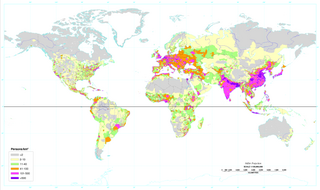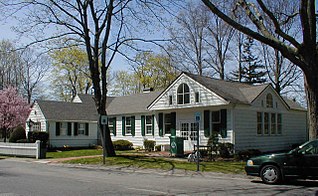Ten Sleep, Wyoming | |
|---|---|
| Coordinates: 44°4′24″N107°55′4″W / 44.07333°N 107.91778°W Coordinates: 44°4′24″N107°55′4″W / 44.07333°N 107.91778°W | |
| Country | United States |
| State | Wyoming |
| County | Washakie |
| Area | |
| • Total | 25.6 sq mi (66.2 km2) |
| • Land | 25.1 sq mi (65.0 km2) |
| • Water | 0.4 sq mi (1.1 km2) |
| Elevation | 4,026 ft (1,227 m) |
| Population (2000) | |
| • Total | 604 |
| • Density | 24.1/sq mi (9.3/km2) |
| Time zone | UTC-7 (Mountain (MST)) |
| • Summer (DST) | UTC-6 (MDT) |
| Area code(s) | 307 |
| FIPS code | 56-81671 [1] |
| GNIS feature ID | 1853216 [2] |
Washakie is an unincorporated community in Washakie County, Wyoming, United States. The population was 604 at the 2000 census, when it was a census-designated place (CDP).

In law, an unincorporated area is a region of land that is not governed by a local municipal corporation; similarly an unincorporated community is a settlement that is not governed by its own local municipal corporation, but rather is administered as part of larger administrative divisions, such as a township, parish, borough, county, city, canton, state, province or country. Occasionally, municipalities dissolve or disincorporate, which may happen if they become fiscally insolvent, and services become the responsibility of a higher administration. Widespread unincorporated communities and areas are a distinguishing feature of the United States and Canada. In most other countries of the world, there are either no unincorporated areas at all, or these are very rare; typically remote, outlying, sparsely populated or uninhabited areas.

Washakie County is a county in the U.S. state of Wyoming. As of the 2010 United States Census, the population was 8,533. Its county seat is Worland.

Wyoming is a state in the mountain region of the western United States. The state is the 10th largest by area, the least populous, and the second most sparsely populated state in the country. Wyoming is bordered on the north by Montana, on the east by South Dakota and Nebraska, on the south by Colorado, on the southwest by Utah, and on the west by Idaho and Montana. The state population was estimated at 577,737 in 2018, which is less than 31 of the most populous U.S. cities including Denver in neighboring Colorado. Cheyenne is the state capital and the most populous city, with an estimated population of 63,624 in 2017.



















